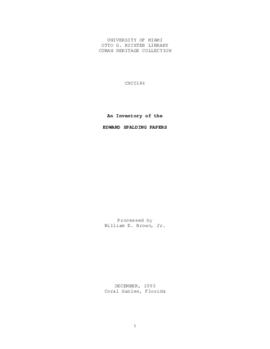"A vital text by one of Britain's leading abolitionists, demanding immediate abolition and calling for a sugar boycott to drive transformative change. First published in 1824, this anonymous tract was written by Elizabeth Heyrick (1769-1831), the radical Quaker abolitionist and reformist pamphleteer. Heyrick once described the idea of gradual emancipation as 'the very master-piece of satanic policy.'
In the present text, Heyrick pleaded with England's citizens to consider the plight of the enslaved in the British West Indies and to boycott all 'slave-made sugar' even if there were 'no other sugar to be had in the world.'
Heyrick encouraged consumers to buy sugar from the East Indies where 'its cultivation is less oppressive, where the cultivators are free -and like you receive wages for their labour...Buy your sugar of those who will not attempt to deceive you. Tell the shopkeepers you will have PURE (unmixed) EAST INDIA SUGAR or none at all...'
Heyrick's comparison between the stolen labor of enslaved individuals in the West Indies and the British working class was deliberate. As early as 1819, she had written of the need to recognize that the labors of the working class 'ought to be considered int he eye of the law as PROPERTY; the poor have no other, and it should be regarded as sacred.'
Expressing these views two years after David Ricardo's Principles of Political Economy (1817), Heyrick, like other radical reformers, 'seized on this theory of value and used it to attack the developing capitalist system for denying human labour its just reward.' (Corfield)
As one might expect, No British Slavery...effectively describes the horrors of slavery. It also touches on the Demerara Rebellion of 1823. A large cut on the title-page shows a semi-naked woman being flogged as an enslaved family (an infant seated on the ground, a small child, an older child, husband, wife) are forced to watch the scene unfold. In the background, two hanged individuals likely reference the events at Demerara.
In 1827, the Sheffield female anti-slavery society bought and distributed 2,000 copies of Heyrick's tract, causing dissatisfaction among certain male abolitionists, some including the spouses or brothers of these women. These men fretted that the 'sugar boycott would be ineffective and immediate emancipation disastrous' -a premise that the Sheffield women refuted by reiterating their call for abolition to take place 'without reserve, without limitation, without delay.' (Corfield)
Heyrick's influence on American abolitionists was profound. Her text Immediate, Not Gradual Abolition; or, an Inquiry into the Shortest, Safest, and Most Effectual Means of Getting Rid of West Indian Slavery, also published in 1824, was widely reprinted in the States.
Frederick Douglass lectured in 1850 that Heyrick had the 'head of a prophetess, and the heart of an angel...She taught that what is right, is reasonable; and that what ought to be done, can be done, and that immediate emancipation was the right of the slave and the duty of the master. Her heavenly counsel was heeded." --description from Ian Brabner, Rare Americana

